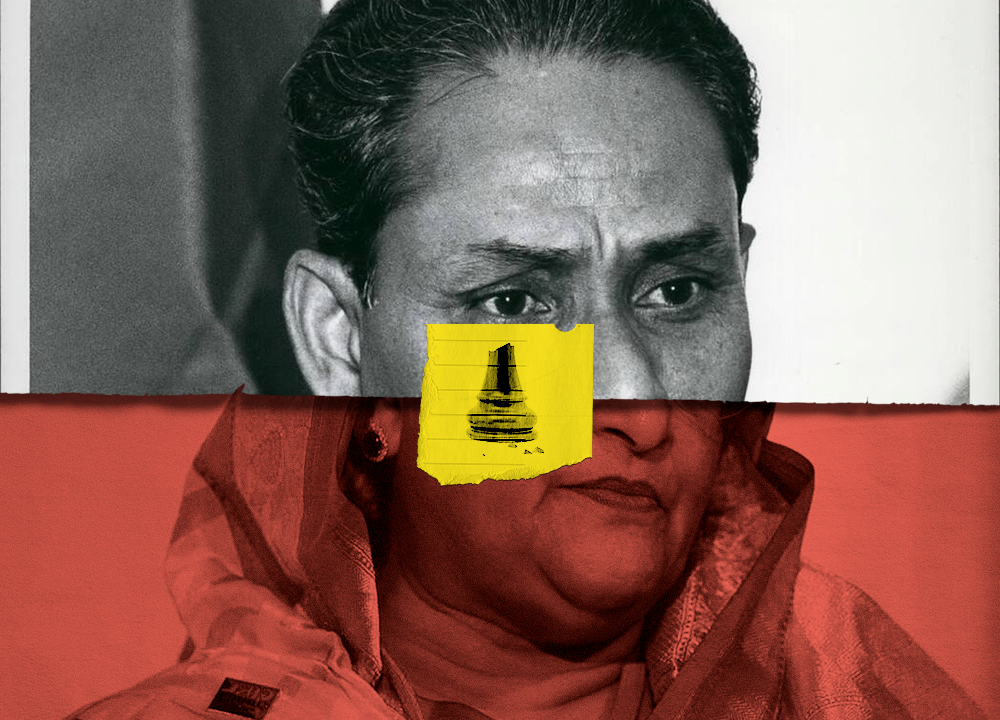The centre cannot hold
The moment a state represses a people’s movement against its corrupt practices, it has lost the fight.

In a scene in my novel The Inheritors, the narrator Nisar Chowdhury recalls a moment from his childhood in Dhaka in the 1980s. He’s playing tennis at Dhaka Club and at one point all of a sudden, he and others around him start coughing and gagging. There’s something in the air and it burns the lungs and stings the eyes, closes up the throat. It gets worse and worse and soon everyone runs inside the club building. Only years later does Nisar understand it was tear gas that he’d inhaled, and it had been deployed at student demonstrators at nearby Dhaka University, protesting the military regime of Lt. General Ershad.
The scene was loosely based on a real-life experience. During one of the many and constant demonstrations against Ershad’s dictatorship in that decade, I had been at Dhaka Club, and I had gagged on drifts of tear gas. They were coming from the direction of Dhaka University, where the police and the army were shooting tear gas shells, and bullets, at student protesters. While I had a notion of why the protests were happening, in my sheltered life, I was hardly, if at all, touched by them.
On another occasion, my family and I were driving down Manik Mia Avenue at night. Just as we turned onto the long stretch of road along the National Parliament, we saw a row of burning torches at the other end. It was a traditional moshal michhil, a torch procession. Of course, we were terrified. There was little we could do, and turning around, as I recall, was not a viable option. So, to my recollection, our driver turned the car off, and we sat there and waited.
The procession approached. It was silent as a funeral march. We braced for an attack. Why, I don’t know. Once it surrounded us, when our fears would come true, not an eye threw a second look our way. None of the marchers cared that our car was there, who we were, where we were going, or what our politics were. Like water, the procession rerouted around our vehicle, coalesced on the other side, and went on with its business.
Its business, as had been the case since Ershad came to power in 1982 in a “bloodless coup,” was to defy, denounce, and dismantle his martial law regime. In the end, the movement won. Ershad left office in a trail of corruption and disgrace in 1990.
A new generation of students is defying, denouncing, and vowing to dismantle the current autocracy of Prime Minister Sheikh Hasina and the Awami League. When it’s their time to leave, they too will exit in disgrace.
Who will take the reins is a question as terrifying as the violence with which Sheikh Hasina, her party, and their state police apparatuses have met the student demonstrations. The opposition, the Bangladesh Nationalist Party (BNP), has proven themselves equally corrupt and disgraceful. If they were to come to power, the only changes would be in the state-sanctioned narrative of Bangladesh and its history, with Sheikh Mujibur Rahman’s name and portraits replaced with Ziaur Rahman’s. Then it will be business as usual: the cronyism, the corruption, the criminal dereliction of public service.
I am a member of the Bangladeshi diaspora, who also spent his childhood years in Bangladesh. I’m writing this in that capacity, as well as a writer whose works concern Bangladeshi history, politics, and current events, and as a professor in a US institution who is deeply invested in raising awareness in my classrooms about Bangladesh. I’m also writing it in full-throated support of the students.
As news of the protests started trickling in last week, and I checked the Bangladeshi sources before the media blackout, I had a feeling the anger and outrage were more than just about the quota system.
That issue was yet another spark in the conflagration that Bangladeshi politics and government have been burning in since Independence, whether it was Sheikh Mujibur Rahman’s consolidation of power and independent Bangladesh’s entrance into autocratic rule, the military coup in which he was assassinated, Zia’s murderous tenure before he too was killed, Ershad’s army rule, or the BNP and Awami League tyrannies that followed. Four successive “elections” later, Sheikh Hasina, with a new stranglehold on power as of January this year, continues the tradition. And so do the students, the vanguard of the country’s hope, with their defiance.
I returned to Bangladesh for one year between 2017 and 2018 to teach and finish my first novel, set during the Liberation War of 1971. In full disclosure, I taught at the University of Liberal Arts, whose founder, Kazi Anis Ahmed, has condemned the student protests, and whose brother is an Awami League politician and member of the Jatiya Sangsad. I also taught for a term at BRAC University.
Every time I hear of a student killed by police fire, I wonder if they had been in one of my classes. Then I am filled with pride and appreciation for their courage, tenacity, and fearless spirit. It’s a wrenching balance, one part of which I wish weren’t happening.
I’ve heard it said the Awami League is finished. I hope it is. And I hope, too, it takes the BNP along with it. The moment a state represses a people’s movement against its corrupt practices, it has lost the fight. Its police, army, and firepower are signs of its weakness and insecurity. Its curfews are desperate tantrums. Its lies convince no one but themselves and their cronies. Whether it likes it or not, its power ultimately comes from the people, and lives and dies by the people.●
Nadeem Zaman is a Bangladeshi writer and academic based in the US.